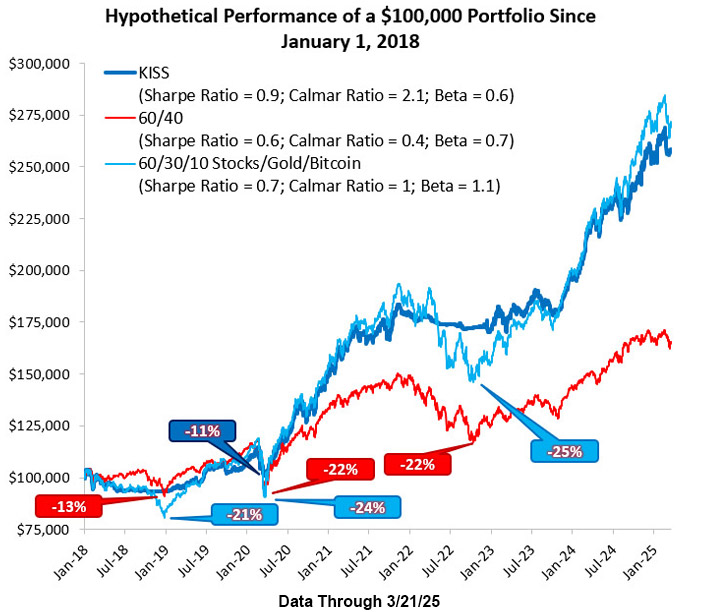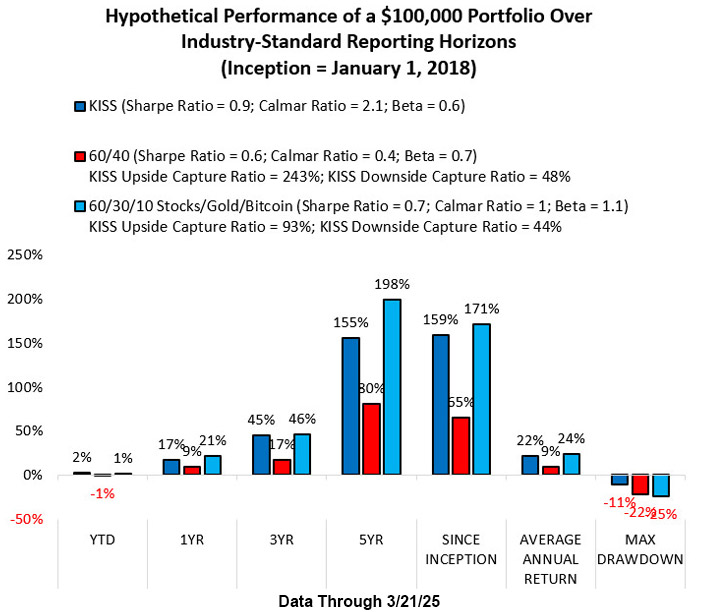In the event a Market Regime phase transition takes place, it may impact one or more of the Target Allocations for the SPLG, GLDM, and FBTC positions in KISS per the Top-Down Risk Management Overlay. Any changes will also impact the Actual Exposures for the corresponding positions per the Bottom-Up Risk Management Overlay.
In the event a Volatility-Adjusted Momentum Signal (VAMS) phase transition takes place for the SPLG, GLDM, or FBTC ETFs, it will impact the Actual Exposure for the corresponding position per the Bottom-Up Risk Management Overlay.
If you are implementing a customized version of KISS, the Top-Down Risk Management Overlay logic still applies to each asset class. You will note any change in the Market Regime at the top of the Discretionary Risk Management Overlay table.
If you are implementing a customized version of KISS, the Bottom-Up Risk Management Overlay logic still applies to each position. You will find any changes in the Volatility-Adjusted Momentum Signal of the ETFs you have diversified into in the VAMS columns of the table.
Please note that the Proper Trade Recommendations in the Discretionary Risk Management Overlay do NOT correspond to KISS. They are only there for investors that have elected to not implement the standard KISS portfolio — i.e., the institutional investors among our client base and the retail and RIA investors that believe they can outperform KISS with their own investment process. We are happy to support them either way.
A general rule of thumb is to be patient when increasing positions and be in a hurry when reducing positions. That is how 42 Macro Founder and CEO responds to KISS Actual Exposure pivots in his portfolio.
When building positions, the strategy that Darius Dale employs is to buy a maximum of 1,500 basis points (15% of his portfolio) of a particular position each Friday afternoon until the desired exposure is reached. For example, this strategy would build a 60% position in the SPLG ETF from a starting point of 0% over a period of four weeks. If the SPLG ETF declined considerably on any weekday prior to Friday, then it is appropriate to pull forward that week’s 1,500bps purchase to that day. No need to wait until Friday in that particular week. He repeats this opportunistic process each week until the position is filled.

